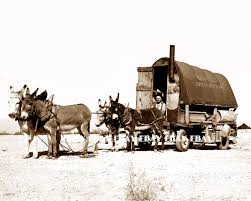These Euskaldunak, or newcomers, came from two launching areas. Some were part of the Euskaldunak exodus out of Gold Rush California and the first ranches of Nevada. Others arrived directly from Europe, leaving the Pyrenees Mountains that separated France and Spain, crossing the Atlantic by ship, and traveling across the continent by railroad to their new western homes. The Basques of Eastern Oregon and Northern Nevada became known early on as sheepherders and livestock men.
In the community of Jordan Valley, Basque and non-Basque numbers expanded to approximately 600 families in the 1920s. The Basques established important markers of their ethnic presence by erecting several still-standing sandstone buildings, including three boarding houses, a fronton (for jai alai, pelota, or handball), and an essentially Basque-built Catholic church.
BASQUE HANDBALL COURT/OUTER WALL AND KIOSK
Built 1915
The two decades from 1920 to 1940 saw major developments in the Basque communities of Oregon, near where I live. Basques settled in or near the small communities of McDermitt (on the Oregon-Nevada state line), Andrews, Fields, and Arock, along with Jordan Valley.
In the years following the early 1940s, Oregon Basques experienced continuing changes. The sheep industry, beset by international competition and diminishing demands for wool, fell on hard times. With the French and Spanish economies gradually recovering from postwar declines after World War II, fewer Basque men were willing to immigrate to the American West as poorly paid herders, isolated from European ties and removed for most of the year from other Basques. Lonely lives under the big western sky seemed less and less appealing.
When I was a teenager, we'd often take our horses to the desert south of Boise, Idaho. Usually, we'd see a Basque sheepherder tending their flocks. These were often young men from the Basque area of Spain and they lived in the above trailers, following the herds. They were far from home, unable to speak English, and very lonely. They'd use sign language and always offered something to eat.
My Rodeo Road series is set on a ranch in the Jordan Valley, Oregon area. In Changing A Cowboy's Tune, the hero was born and raised on the family ranch and takes his bride there to live.
The second book in the series, Winning A Cowgirl's Love, will be available in the anthology Do You Take This Cowboy on June 1st. This is Randi and Davie's story.
Randi Bachmann has two problems after
winning an extravagant wedding package from
the reality show Your Dream Wedding: She doesn’t have a
groom, and she doesn’t want to get married. However, she needs the $50,000
prize money awarded if she stays married for six months. In desperate need of
the cash, she picks the one man she knows will be only too happy to leave after
the term is up, Davie Dunbar.
When his college romance went south, Davie ran
as far and fast as he could. Back home after six years of wandering, he’s set
on trying to make up to Randi for deserting her. Marrying her is the perfect way to
prove to Randi he’s changed. He’s willing to do anything, including take part
in a fake wedding, for a second chance to win her love.
Have you ever heard about the Basques?








Stephanie, Interesting post. I keep thinking I need to do research on the history in SE Oregon and have a character in my historical books.
ReplyDeleteWe have a wonderful Basque community in Boise, a Basque block in downtown that is devoted to ensuring their culture remains part of Boise’s tapestry.
ReplyDelete